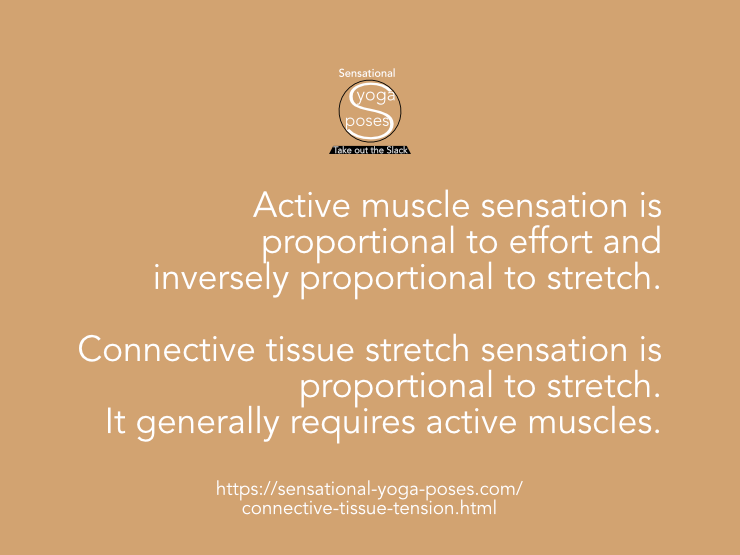Where electrical wiring transmits electricity and water pipes transmit water, the stuff that connective tissue transmits is tension.
Electrical wiring is insulated so that current can be conducted without short circuiting. Water pipes are generally sealed but their very structure is designed to transport water without it leaking out.
So that connective tissue can transmit tension "cleanly", it allows gliding between adjacent connective tissue structures.
While bones provide the framework for all the parts of our body, and while muscles provide the power to use the body, connective tissue is what holds it all together.
Connective tissue doesn't just help hold our body together, it is also contributes to proprioception.
Note that connective tissue could be considered as having an opposite and complementary function to our skeleton and bones.
(Imagine for a moment that the two are actually separate!).
Where the bones and skeleton push outwards creating space, connective tissue pulls inwards, creating union and integrity.
In an electrical circuit, if there is a defective component, wiring can be used to bypass the defective part. Said part can be replaced when a replacement is available.
Connective tissue can be used in a similiar way. It can become sticky or bind to other connective tissue structures to bypass "faulty components".
One challenge is how to unstick connective tissue when the bypass is no longer required.
Muscles along with connective tissue are the main drivers of proprioceptive information within our body.
Muscles create muscle activation sensation which is inversely proportional to how much stretch a muscle is undergoing and proportional to effort or output.
In order to activate, muscles need an opposing force to work against. Sometimes that force comes from something outside the body, something you are working against. Sometimes it comes from the weight of body parts being moved or stabilized. And failing that it can come from the activation of opposing muscles.
Because muscles require an opposing force to work against in order to activate, they can be used to effectively measure what is happening to the body, or what is happening within it.
Connective tissue, when subject to stretch, or "strain", creates connective tissue stretch sensation which is proportional to stretch.
Both muscle activation sensation and connective tissue stretch together give our brain information on how the parts of our body relate. But, except for in limited cases, you can't have connective tissue tension unless you first have muscle activation.
Connective tissue tension can "register" the weight of body parts hanging from it. So for example, lifting the arms to the front with minimal effort, connective tissue can register the weight of the arms. Even with arms hanging down, connective tissue stretch can be registered. Note that in this latter case, even though the arms may be relaxed, other muscles are required to keep the torso upright. Even if bones are stacked, muscle activation is still required to maintain that stacking.
With smaller, thinner or less numerous muscles, muscle activation sensation is harder to perceive. In cases like this, the more dominant sensation is connective tissue stretch.
Note that muscle activation sensation also tends to diminish when the muscle in question is lengthened, such as when stretching. And so when stretching the more dominant sensation can also be that of connective tissue tension.
An exception to this is with active stretching. In active stretching where the muscles that oppose the muscle being stretched are active, then those muscles will be in a shortened position. As such the active opposing muscles will create a strong muscle activation sensation. And so with active stretching you can get a combination of muscle activation sensation as well as connective tissue stretch.
I should point out here that a large part of how I learned to improve joint and muscle control and overall body awareness was through the practice of tai chi (which I normally write as tai ji).



